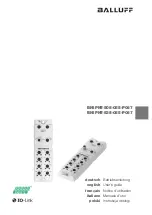
Using your MAXI MOVE
22
001
.2
506
0.E
N
r
e
v.
1
1
The leg portions of the sling will tend to be fairly
high in the patient’s crotch area. Straighten them
out for added comfort. The patient may then be
positioned in a chair, or placed on a bed. Patients
with extensor spasms may be lifted by the
MAXI MOVE, but care should be taken to support
the patient’s legs during the beginning of the lift.
Fig. 34
When lifting patients with leg amputations, use
the double amputee sling (available as an
accessory from ArjoHuntleigh). This sling is
specially designed to accommodate each
patient’s center of gravity.
The transferring of patients should always be
done with the chassis legs closed.
Manoeuvrability will be easier, especially through
doorways. As usual, the patient should be
positioned facing the attendant.
Powered DPS Spreader Bar
If your lift has been supplied equipped with a
powered DPS spreader bar (see Fig. 35), the use
of this type of spreader bar— including sling
positioning with patient, sling connection to the
spreader bar, and patient handling—is the same
as the manual DPS spreader bar described
previously in these instructions.
Fig. 35
The fundamental difference is that the powered
DPS spreader bar has the added advantage of
enabling the patient positioning manoeuvre to be
performed with minimal physical effort by the
attendant.
The rotation of the powered DPS spreader bar is
manual and is the same as the manual DPS
spreader bar.
The powered DPS is classified by ArjoHuntleigh
as a wet environment unit. A blue and white
circular label is attached to show this. This label
signifies that anything above its position must not
be soaked in water, either when bathing or
showering the patient.
To operate the powered patient positioning
function, ensure that the green power button is
pushed in (see Fig. 8).
When ready to perform the patient positioning
function (as described previously), operate the
powered DPS control buttons on the handset (see
Fig. 6) or the buttons found on the control panel to
cause the spreader bar to move in the required
position.
WARNING: When lowering the spreader bar,
ensure that the patient’s and attendant’s legs and
feet are well clear of any parts of the lift to avoid
injuries.
Only detach the sling leg connection clips
followed by the shoulder connection clips when
the patient’s body weight is fully supported by
the bed.
WARNING: Before using your lift equipped with
the powered DPS spreader bar, familiarize
yourself with the various parts as illustrated in
Fig. 35. Read and thoroughly understand these
operating instructions in order to avoid mistakes
that could result in injury.
The powered DPS spreader bar must be used in
accordance with the following instructions and
in conjunction with the operating instructions
previously described for the manual DPS
spreader bar.
The lifting capacity of the lift, when equipped
with the powered DPS spreader bar remains the
same as the manual DPS spreader Bar.
DPS actuator
Sling
attachment
lugs
Positioning
handle
”Wet Environment
Unit” label
















































